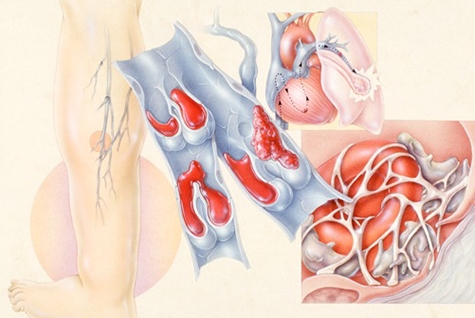Show of hands…how many of you consider yourselves “compliant” with the array of regulations, laws and so-called “guidelines” you work under? Most of the time? Some of the time? Never? Now, let me pose the question a different way: How many of you think you can always, or even most of the time, remain in compliance and have a successful practice? Or, consider the question presented this way: How many of you think you can …
Read MoreClinical Challenge: July/August, 2014
THE CASE This patient presented with a sprained knee. View the image taken (Figure 1) and consider what your diagnosis would be.
Read MoreAbstracts in Urgent Care: July/August, 2014
Clinical prediction rule for ureteral stones Key point: A new clinical score may predict the presence of uncomplicated ureteral stones and reduce the need for CT scan. Citation: Moore CL, Bomann S, Daniels B, et al. Derivation and validation of a clinical prediction rule for uncomplicated ureteral stone—the STONE score: Retrospective and prospective observational cohort studies. BMJ. 2014; 348:g2191. In this two-phase trial, five factors were identified and then prospectively validated for prediction of ureteral …
Read More
Acute Rheumatic Fever
Urgent message: Patients with seemingly unusual conditions do present to urgent care, underscoring the need to always take a thorough history for all “red flag” symptoms. LEE A. RESNICK, MD, FAAFP Introduction While the incidence of acute rheumatic fever has declined significantly in developed countries over the last several decades, sporadic cases do still occur. Diagnosis may be difficult due to the non-specific symptoms and the lack of experience with the condition amongst most urgent …
Read More
Evaluation of Headaches in Urgent Care Part 2: Non-Emergent Headaches
Urgent message: Headaches are challenging chief complaints and being able to identify and differentiate among the non-emergent types of headaches will help with medical decision making and patient care. JACQUALINE DANCY, PA-C, MPAS In the conclusion of a two-part series, this article focuses on non-emergent headaches. For the purpose of this article, non-emergent headaches are classified as those that are not life-threatening and pose little to no risk of permanent functional disability. Most non-emergent headaches …
Read MoreAbstracts in Urgent Care: June, 2014
Modification of Wells criteria in cancer, previous DVT Key point: Wells criteria for deep venous thrombosis (DVT) may need modification for patients with cancer or previous DVT. Citation: Geersing GJ, Zuithoff NP, Kearon C, et al. Exclusion of deep vein thrombosis using the Wells rule in clinically important subgroups: individual patient data metaanalysis. BMJ. 2014;348:g1340. Possible DVT is an important diagnosis to make, however, many urgent cares do not have access to ultrasound. A combination …
Read MoreClinical Challenge – June 2014
THE CASE These x-rays were taken on a 49-year-old man with chronic bilateral knee pain that had increased over the past 6 months with ambulation. Examination was unremarkable. View the images taken (Figures 1, 2, and 3) and consider what your diagnosis would be.
Read More
Nasal Polyps
Urgent message: Differential diagnosis and careful attention to signs, symptoms and history are particularly important in management of patients with nasal inflammation. MOHAMMED NOMAN MOHIUDDIN, MD Overview Nasal congestion and sinus symptoms are common urgent care complaints. Recurrent sinusitis, either from allergies or upper respiratory infections is frustrating to patients. Proper evaluation and treatment of underlying predisposing factors will help alleviate symptoms and address the disease process associated with polyps such as those seen in …
Read More
Outpatient Management of Deep Venous Thrombosis
Urgent message: Urgent care providers are on the frontline in diagnosis of DVT. Outpatient management is a consideration for carefully selected patients. SABRINA SOOD, MD Deep venous thrombosis (DVT) is formation of a clot in the deep venous system, usually in a lower extremity. Half of untreated patients with DVT will go on to develop the fatal complication pulmonary embolism (PE). Approximately 300,000 to 600,000 Americans die each year due to venous thromboembolism (VTE).1 Urgent …
Read MoreRisk Mitigation in Urgent Care: Part 3
Lee A. Resnick, MD, FAAFP In my previous column, I discussed three core areas where risk and potential liability exposure lurk and ways to mitigate that risk. This month, the last in the three-part series, I will focus on specific clinical policies and procedures that can effectively reduce liability risk and enhance patient safety, quality and patient satisfaction…the holy grail of high-performing practices. Eliminating ‘Pre-triage’ The term “pre-triage” is used to describe the all-too-common practice …
Read More